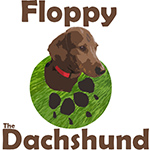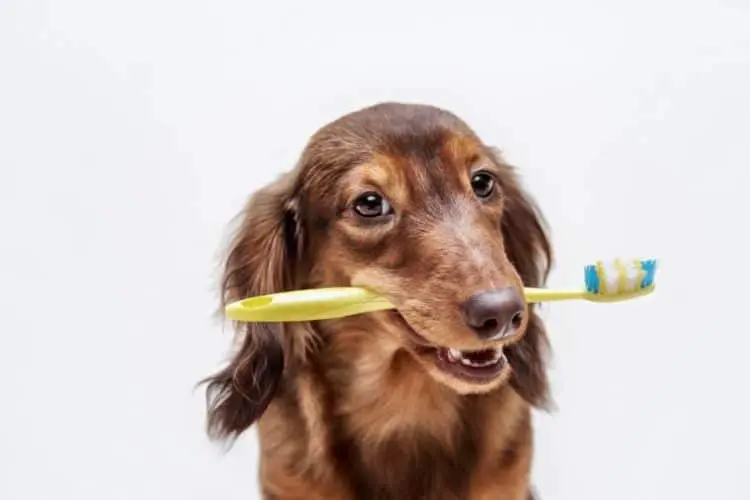Dogs are curious about their surroundings; they lick everything and put things in their mouth. This is one way that they learn. However, this results in your dog having bad breath and plaque build-up that is difficult to remove. A lot of dog owners only care about bathing their dogs and using good shampoos to prevent fleas and ticks, but they forget about their dog’s dental hygiene.
In the past, a dog’s dental health was not given enough significance, but more recently, emphasis has been placed on a dog’s dental hygiene. Dental hygiene is of equal value for dogs as it is for humans; in the event of a failure to maintain better hygiene, a dog’s teeth can build up plaque, causing tooth pain, infection, decay, and bad breath. All of these threats to dental health can also affect the overall health of your dog.
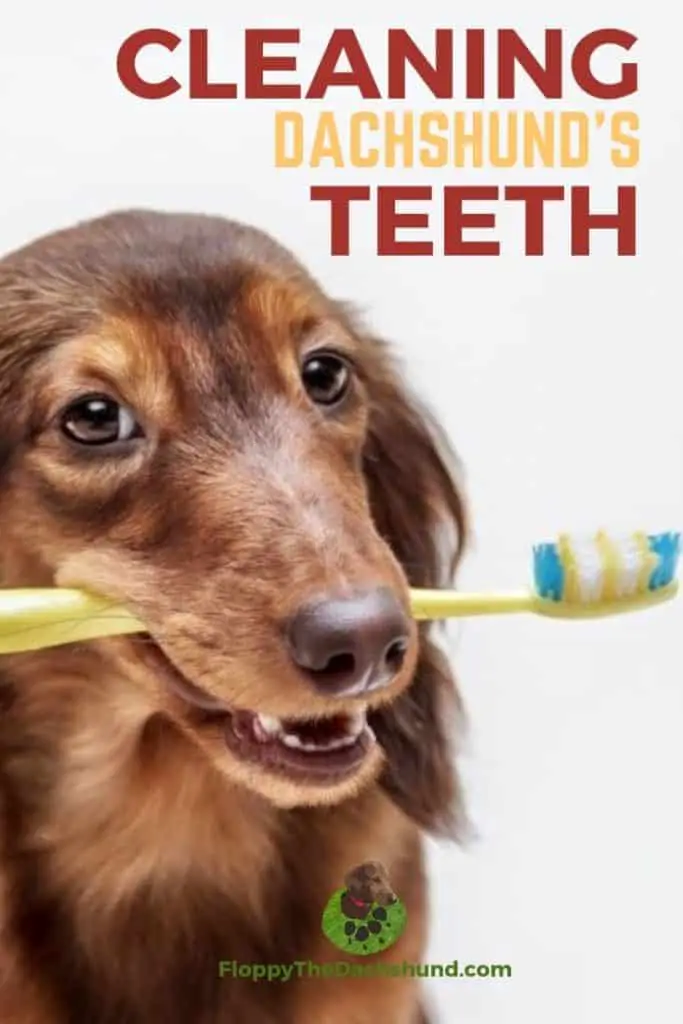
In addition, there are other oral health issues that can also be caused by your dog eating dirt. Dachshunds are more prone to dental health problems than other breeds. To prevent problems, establish and maintain a regular tooth-brushing routine. We all know how this goes – it is challenging to brush a dog’s teeth, but with these techniques, your dachshund might allow you to brush his teeth instead of fighting you. This brushing teeth ritual might even help strengthen your bond with your dachshund.
STEP 1
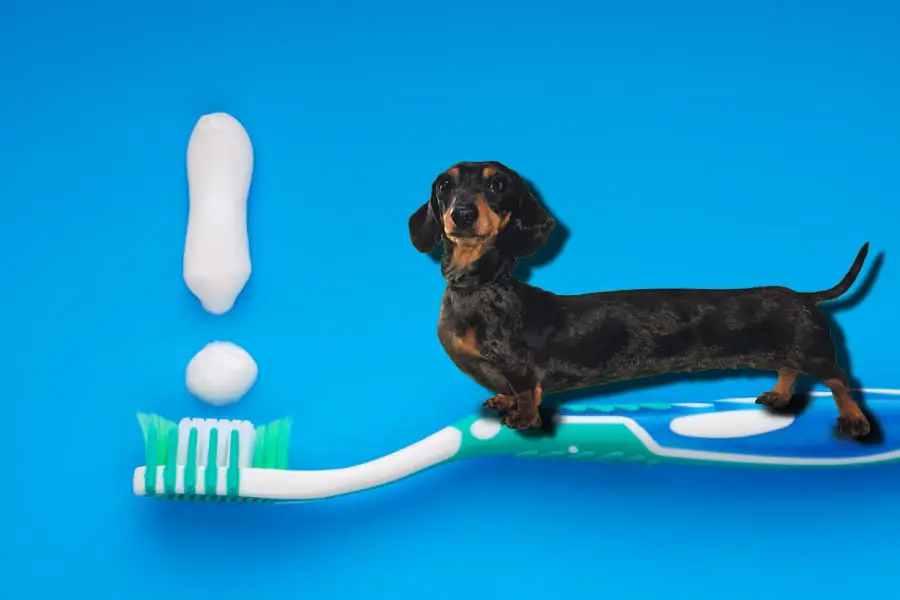
A dog needs to get acclimatized to the taste of toothpaste so that when you approach him for brushing, he won’t be surprised and want to get that taste out of his mouth. Take a small quantity of the paste and let your dog lick it off of his teeth. This way, he will get used to the taste and texture of the toothpaste and will not have much problem later on. An essential word of advice here is to use toothpaste made for dogs only; toothpaste made for humans has a minty taste to it that your dog will never like.
A lot of the toothpastes for dogs available on the market are of different flavors such as poultry, peanut butter, and beef, which make them more appealing for your dachshund. These flavors will make them think that toothpaste is a treat.
STEP 2
Gently place some toothpaste on your dachshund’s teeth and rub it with your fingers. Also, massage his gums. This will further allow your dog to get ready for the process. Your dachshund will slowly get used to having something in his mouth and will not protest later when you follow up the procedure with the brush.
Once your dog is comfortable, gradually work your way from the front teeth to the back teeth, slowly covering his entire mouth. Repeat this process every day, and with time, your dog will understand that this new process is routine. And do not forget to reward your dachshund with a treat or play with him and remind him that he is a good boy.
STEP 3
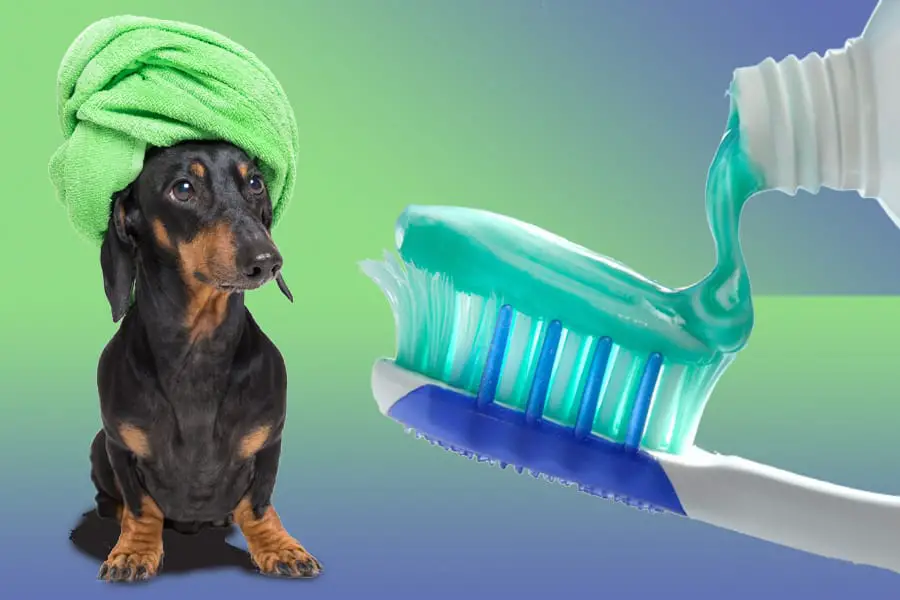
Introduce the brush into the routine. To make that happen, first of all, sit down or kneel beside your dachshund. Be very calm and loving in your approach. Avoid holding him down as this might intimidate him. Now, take a small amount of toothpaste and gently press it against your dog’s teeth.
Place your hand over the top of his muzzle and lift his lips on one side. Move the dog brush slowly in a circular direction. Try to keep it at 45 degrees so that all the plaque can be easily removed and the gum line can be cleaned. Make gentle strokes from the brush and keep in mind that your dog should feel comfortable with this process. If you see signs of struggle, pause for a while and caress his back and head. You might notice some amount of gum bleeding in the initial days of brushing, and this is very normal since the gums are trying to adapt to the new cleaning process.
WARNINGS
- A little amount of gum bleeding is average, but if the bleeding persists, then contact the veterinarian to rule out a possible gum infection. It is very common for dogs to have dental health issues if their dental health has not adequately been taken care from an early age.
- Use a brush that has soft hair and is meant for dogs. Using a toothbrush meant for humans might not lead to similar results. Human teeth are very different from dog teeth; using a human toothbrush increases the chances of gum bleeding for your dog as the bristles are not soft.
- Only use dog-specific toothpaste to brush your dachshund’s teeth. Toothpaste meant for humans contains fluoride, which is not healthy for your dog.
TIPS
- Talk to your dachshund in a very loving and cheerful tone; try to praise him during brushing and after brushing. Be very supportive during the entire process. Watch out for any signs of struggle and pause whenever necessary. Shower your dog with love the whole time.
- Avoid being aggressive or angry with your dog when he’s getting his teeth brushed. He will not understand why you are angry with him.
- Take your dog out for a walk, or play with him, or offer a treat after brushing his teeth so that he associates the teeth-brushing ritual as a positive experience.
- Slowly introduce the teeth-brushing ritual. Don’t make it a regular ritual right away. At first, brush your dog’s teeth once a week, then after two weeks, make it two times a week for two weeks, and so on. Repeat the entire process until your dog gets used to it and is ready for it to become a ritual. If your dachshund is struggling, try to give him time.
- Only brush your dog’s teeth when he is calm and relaxed. If he is already panicked about something, he will have a tough time adapting to the ritual and may even fear getting his teeth brushed. You don’t want your dog to see getting his teeth brushed as a negative experience.
- In addition to brushing, there are other items suitable for your dog’s dental hygiene. For example, the chewing action from dental treats like dental chews scrapes off plaque, and your dog will enjoy it because the treats come in the form of a meat-flavored stick. Dental sticks are delicious and your dog will love them. Try giving your dog dental chews or sticks on the days when he doesn’t get his teeth brushed. This will make his breath fresher and also prevent future plaque build-up.
